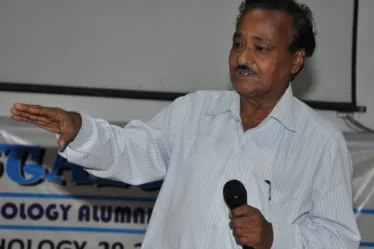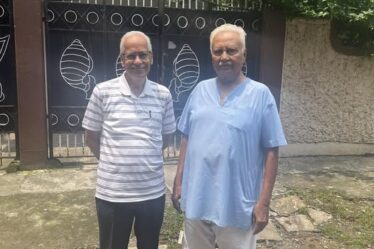Once, in the bustle of Ashok Nagar, Wardha, near the now-quiet ruins of the old Model High School, lived a woman named Pramila. Born on October 3, 1976, in Gondia, she grew up like many others—wrapped in the routines of daily life, with little warning of what lay ahead.
She married Ramesh, a mason with strong hands and few words. Together, they raised three children—two sons, 29 and 26, and a daughter, 22. None of them married yet.
Today, it is Neha who holds the family together.
Still a second-year B.Tech student at a local engineering college, Neha now cooks for her mother, cares for her through bouts of nausea, and sits by her side when the nights stretch long and heavy. Since Pramila was diagnosed with cancer four years ago, Neha has quietly taken charge of the household.
“My brothers are unemployed, and my father—he’s a mason, but the hospital unsettles him. He struggles with the smell of illness, the stillness of hospital wards. So whenever my mother has a hospital visit, I go with her. I must have come hundreds of times in the last four years,” she says.
She speaks without bitterness. There’s a calmness in her voice, a quiet strength. Stoic, composed, resilient—Neha has learned to meet life head-on. Perhaps the hospital corridors, the long hours among patients and pain, have numbed her. Or perhaps they have steeled her.
Maybe it’s acceptance. Maybe it’s courage. Maybe it’s the simple, stubborn love of a daughter who refuses to give in. What keeps her smiling, we do not know. But she does.
*****
Pramila first noticed the white discharge in 2021. It lingered for months. Then came the itching. Then the bleeding—enough to soak through four, five pads a day. She went to a local hospital. They found a mass in her cervix and referred her to the hospital at Savangi. An MRI confirmed the worst: cancer of the cervix, Stage IIIB, with lymph node involvement. A biopsy showed poorly differentiated non-keratinising squamous cell carcinoma.
She underwent surgery. But no one told her the truth. The doctors broke the news to her husband instead. They believed the diagnosis was too heavy for her, too sharp a truth for a woman who looked so calm. So, she recovered from major surgery, unaware that a name—cancer—had already begun to define her days.
It was only at Sevagram, when she came for radiotherapy, that the truth reached her ears.
She didn’t cry. She didn’t collapse. She asked, “What do I have to do now?”
She followed every instruction. Twenty-five rounds of radiotherapy. Three cycles of brachytherapy. Several rounds of chemotherapy—cisplatin and 5-fluorouracil. She traveled from Wardha to Sevagram and back again. She endured.
And for two years, she stayed well. Every three months, she came for her check-up, never missing a visit.
But in October 2023, a lump grew in her neck. The FNAC confirmed it—metastasis in the left supraclavicular lymph node. A PET scan at AIIMS Nagpur revealed more: hot spots of cancer in her chest and pelvis, tiny nodules in her lung. The disease had spread.
Back in Sevagram, she braced herself for another round—eight cycles of chemotherapy, once every three weeks. Still, she showed up. Still, she smiled at the nurses.
But in February 2024, the pain started—sharp and low, stabbing through her back and left leg. A CT scan showed bone metastases. The cancer had crept into her retroperitoneal nodes and lumbar vertebrae. She also developed an anal hernia. The tide had turned.
She was moved to the palliative care ward.
Now, it’s April 2025. Pramila lies on her side, resting on a thin mattress. Her daughter sits beside her. Every few weeks, she refills her mother’s bottle of oral morphine. The medicine brings relief, but when a dose is late, the pain flares—fierce and unforgiving.
“I have severe low back pain,” Pramila says softly. “My left leg hurts. I can’t walk. I feel sick all the time. Food smells make me nauseated. I sleep very little. But I don’t cough. I can breathe.”
She used to weigh 60 kilos. Now, she weighs 54. Her BMI is 24. Her Karnofsky score is 60. She is still trying.
Doctors have started her on 10 mg of morphine every six hours. Her blood pressure is kept in check with amlodipine. But the real treatment, she says, is the time spent with her daughter. The quiet care. The unspoken comfort.
Does she know her diagnosis? Yes. Does she know the future? Yes. She doesn’t want false hope. She wants peace. She wants her pain eased. She wants her daughter to sleep for once without worry.
Her husband and daughter stay close, always. They are her world now. And in this quiet corner of the ward, pain and love live side by side—one growing, the other refusing to.
16 April 2025

